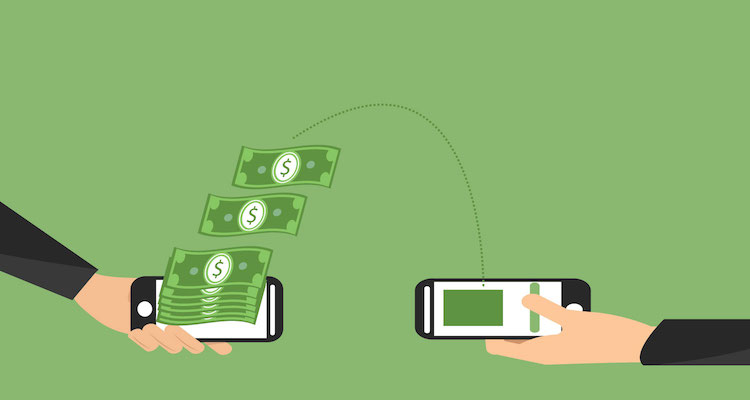Jim McKelvey blows glass. He sells his unique glass fittings from his studio in St. Louis, accepting payments in cash, by check, and by Mastercard or Visa. In 2009, he found himself talking to a customer in Panama who wanted to buy $3,000-worth of glassware… but who only had an American Express. Her husband had a Visa but he wouldn’t be back for another week. The glass artist realized he was about to lose what would have been a very valuable deal. McKelvey was not connected to every credit card network. However, he was also a tech entrepreneur and he did have one valuable connection. He told Jack Dorsey, then the CEO of Twitter, about his frustration with the financial technology for small merchants. Together, the two of them brainstormed.
Square
That year, Square, a company that Jack Dorsey now leads while running Twitter, released a small white credit card reader. The reader plugs into the earphone socket of a mobile phone and works with an app to charge credit cards and pay merchants. The launch of Square; now public and worth nearly $5.2 billion, is one sign of the degree of innovation affecting fintech.
As smartphones have spread around the world, the ability to turn a small computer capable of transmitting information wirelessly into a mobile, electronic payment tool has meant that Peter Thiel and Max Levchin’s vision of a digital wallet is now largely coming true. Almost everyone now has a device capable of making payments without touching cash or plastic. According to one report, 39 percent of mobile users in the US made a payment with their mobile device in 2015. At Due, we expect that ratio to hit 70 percent by the end of 2017.
The Increase of Mobile Payments
A study by Juniper Research concluded that the value of mobile wallet spending worldwide in 2017 will rise by 32 percent to reach $1.35 trillion, driven largely by spending in East Asia, particularly on China’s Alipay and the social media/payment platform WeChat. The innovation in mobile payment is primarily happening in three areas. First, that traditional eCommerce payment solution providers haven’t been left flatfooted by the rise of mobile devices.
As users shifted to mobile devices, they’ve made sure that their payment systems are mobile-friendly. It’s now just as easy to make a purchase on a mobile phone as it is on a large screen. Similarly, mobile wallets have also come of age.
Paypal
Platforms like PayPal have created their own apps that let users make payments wherever they might be. If Jim McKelvey had had a PayPal account, his customer could have pulled out her phone, opened the app and sent the money from or through her PayPal account to the glass artist. (Fortunately, it appears she didn’t, otherwise McKelvey and Jack Dorsey would have been several billion dollars worse off.) Some of the innovation in mobile fintech has come not from technology or finance firms but from the merchants themselves.
A number of restaurant apps allow customers to place orders by entering their credit card details. Others have gone even further. Starbucks, for example, has taken a more creative approach. The company allows customers to add funds to its app, using their credit card or PayPal, place their order and arrive at the store to find their soy frappucinnos waiting for them. In effect, the company has sped up the payment process. At the same time, payment and purchase data are stored on the customer’s device. (Another mobile point of sale services use the merchant’s device but do not store the data.)
Using Mobile Payments in the Real World
Around 1,200 Starbucks locations now receive at least 20 percent of their orders through mobile order and payment, a rise that’s starting to cause problems at the hand-off. Now, the significant movement in mobile payments is coming from a new piece of technology. The growth of Near Field Communication depended on a change in hardware; NFC devices use a special chip embedded in the instrument to send small amounts of information wirelessly over short distances.
Both Apple and Google use NFC to take payment data stored on a mobile device and transfer funds when the device is waved over a sales point in the merchant’s store. Again, all data is stored on the phone and can be quickly blocked if the device is lost or stolen. Samsung has its own unique system for its devices but so far, Apple appears to be enjoying the widest rollout. A payment made by a swipe of an iPhone is now accept by 36 percent of US merchants. Even that swipe, though, may soon become a thing of the past.
Transport
Transport for London, the company responsible for managing the London Underground, recently tested its ability to track the location of mobile phones connected to the subway’s wifi system. The data could allow the company to better manage congestion but some experts have suggested that it might one day enable to TfL to complement the Oyster card that passengers swipe at the beginning and end of their journeys with an automatic payment system. The transport body could use passengers’ phones to measure the distance traveled and charge passengers through their mobile devices. That would be a simpler version of the “Walk Out Technology” that Amazon has promised to pioneer in its Amazon Go bricks and mortar stores.
In those stores, customers will swipe a QI code on a mobile phone app when they enter the store. “Deep vision technology” and “sensor fusion” tracks the items customers choose to buy and when they leave they store. Their mobile device notes their location and charges to their Amazon account anything they’ve taken with them.
Security
One factor that might affect the development of mobile devices into personal payment platforms is the issue of security. An experiment by Google reveals how at least one company is considering dealing with the problem. Instead of using an NFC chip to take the payment, Google’s Hands-Free app uses the company’s location services, together with Bluetooth and wifi to detect a customer’s location. Customers can tell the cashier that they want to pay with Google and can then look into a camera mounted on a large box that looks a little like a Monopoly house. The camera matches the image to the photo used on the Google profile.
Google says that it won’t use the purchase data to better target advertising but when used on iOS devices, the system will give Google a way to track the location of customers not using Android.Bluetooth Low Energy devices aren’t new. PayPal’s Beacon dates back to late 2013 and is a payment-oriented version of a technology intended to allow merchants to send location-based advertising to nearby customers.
Here’s an Example
A shopper in a department store, for example, might receive advertisements on their phone from scent manufacturers when they enter the perfume department. PayPal’s Beacon sends a regular call from the merchant’s point of sale system that looks for compatible devices. Those devices send back identifying information to the POS, including the customer’s photograph. When the client reaches the cash desk, the cashier can select the name of the client and charge their PayPal account.The range and variety of the different of methods payment now being tested reveal the extent to which mobile payments are still a platform in flux. From NFC to BLE, software and hardware manufacturers, merchants and fintech companies have a spectrum of different ways to deliver funds through a mobile device. And the base technology changes rapidly too, forcing businesses to adapt their models.
Apple
When Square produced its credit card reader, the small device looked like a remarkable piece of hardware and a novel use of the headphone jack. The release of the iPhone 7, which removed the headphone jack, required the company to look for new designs. Although the company still offers the small plug-in device, it also now supplies a contactless chip reader that can both manage Apple Pay transactions and read chip-based credit cards. If wearable technology advances, it’s possible that we could see mobile payment devices spread to include fitness bracelets and stand-alone smartwatches. Technologically, there’s no reason that mobile payments have to be limited to the most commonly used mobile devices. One of the biggest problems faced by fintech companies experimenting with mobile payments is the current lack of a global standard.
A Technology Standard
A single technology standard, implemented worldwide, would allow fintech companies and merchants to focus their research and experimentation within a narrower field in the same way that video and audio industries chose DVD and MP3 as their standard formats. As the technological advances in mobile devices themselves shorten, and as it becomes clearer which payment methods merchants and customers prefer, the chances of standardization increase. Until then, however, expect to see continued experimentation in methods of making payments with mobile devices instead of with cash or credit cards. And expect to see small merchants like Jim McKelvey wonder which mobile payment methods would suit their business best.





